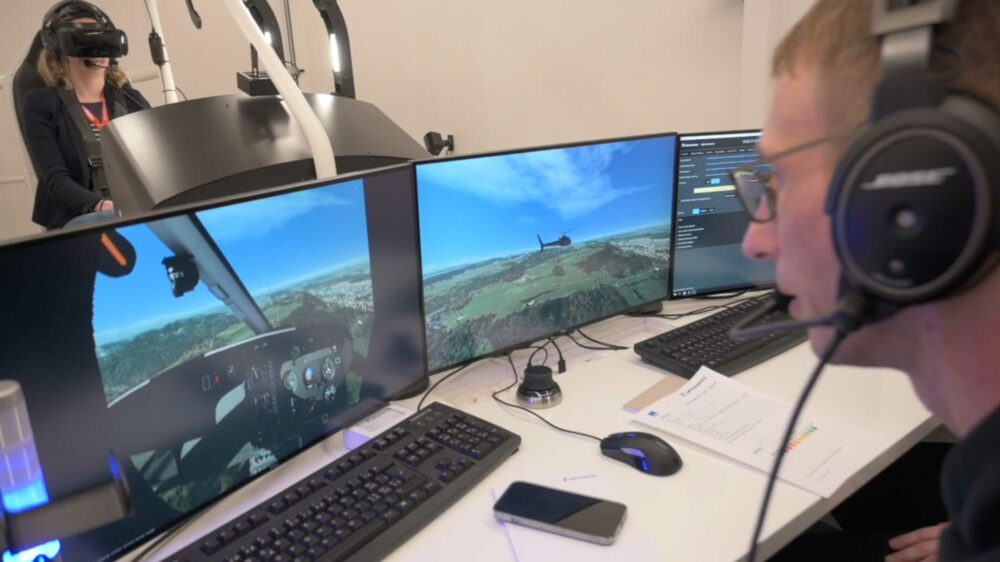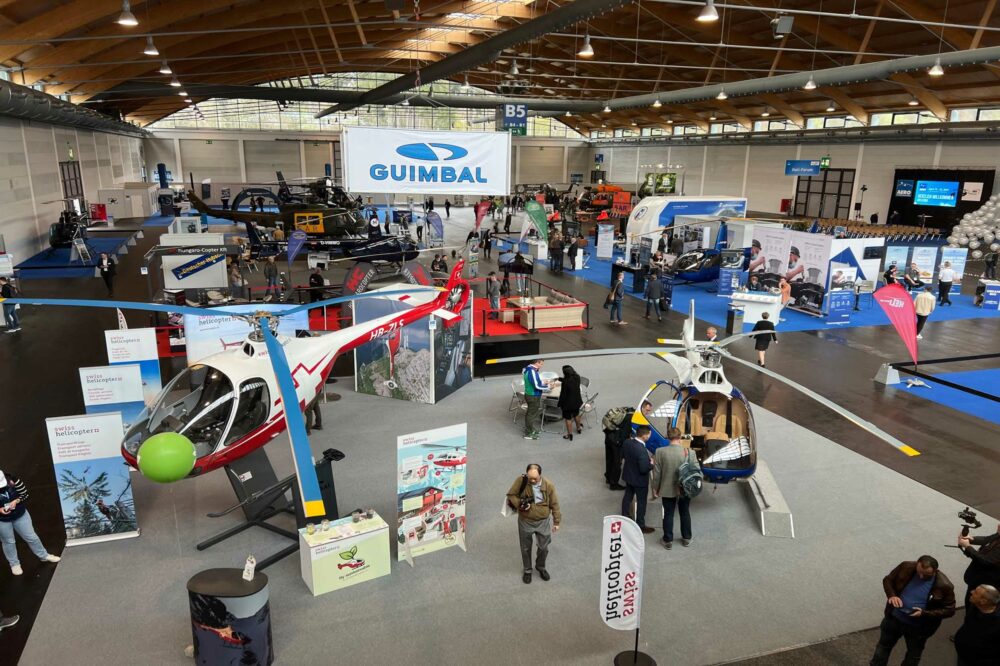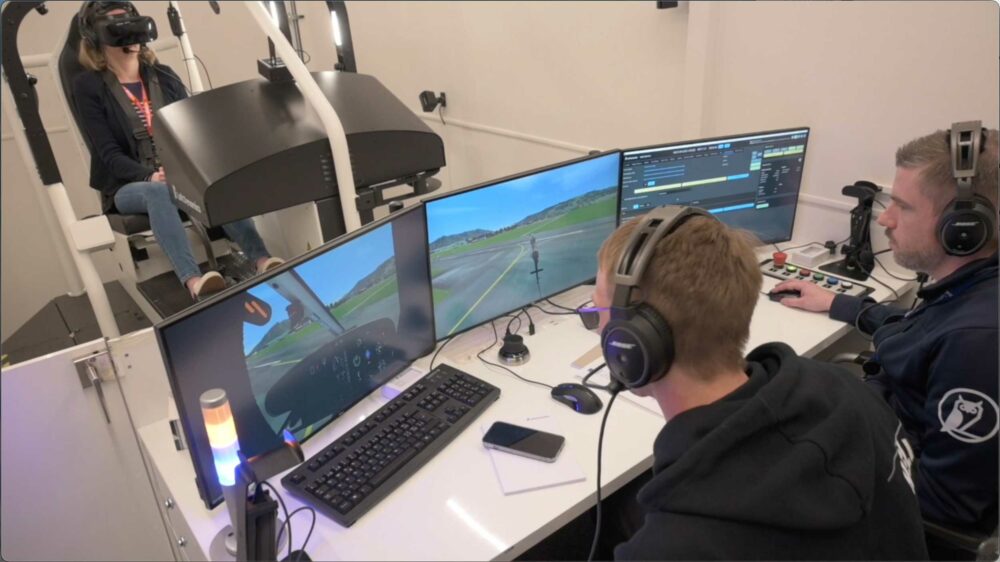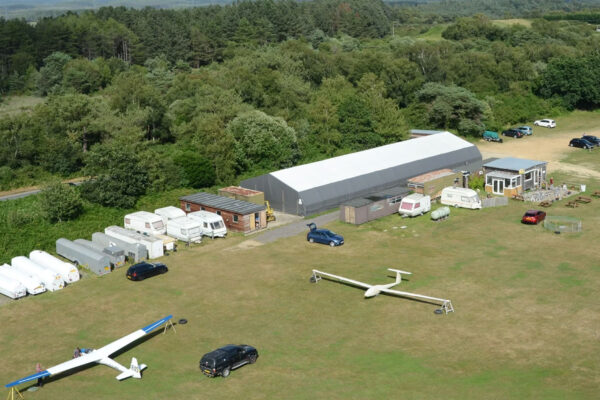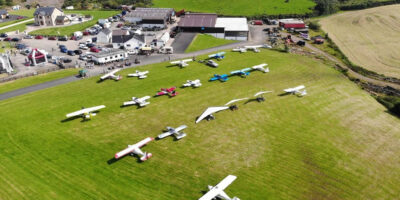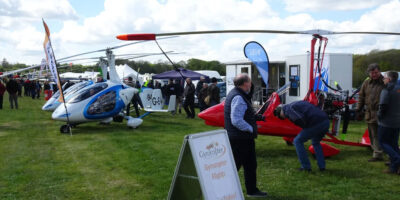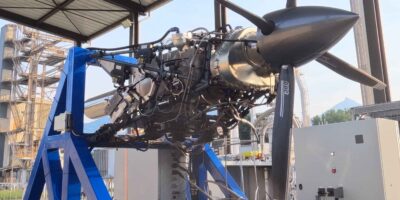I was excited then to get the chance to have a go at flying one in a virtual environment – and in a full motion simulator no less. The only sim I’d ever flown before was a 747 at Coventry, which didn’t move, so I was intrigued to find out how realistic a sim could be at replicating the rather more subtle and sensitive movements of a helicopter. This one, Robby told me, is apparently so realistic that pilots can do their check flights on it.
When I arrived at the stand, I was surprised to find my eyes needed to be measured up. It turned out that rather than the wraparound screens you might imagine for a sim, this one works with virtual reality goggles. They need to know the distance between your eyes to make sure they’re correctly adjusted for your vision.
Eyes duly measured, I climbed into the seat and donned both the VR goggles and a set of Bose A20s, through which I could talk to Robby, who was sitting, not in the seat next to me, but at a control panel opposite with screens that replicated what I could see through the goggles.
At first there was just darkness – and then all of a sudden, I was sitting in a helicopter on an airfield in the Swiss Alps on a beautiful sunny day. It was pretty surreal!
What felt especially strange was that I could look all around me, up at the sky, down at ‘my’ feet on the pedals and hands on the controls, just as if it were real life. It’s a much more immersive experience than a wraparound screen could have provided.
Counting down three, two, one, Robby lifted the helicopter into the hover and I followed through on the controls so that I could start to get a feel for the control inputs required. It really did feel as though I was flying! He handed me control of the cyclic on climb out asking me to try out the pitch before doing some turns.
When he gave me all three controls, I could immediately sense the ‘power’ available by how quickly I found myself too high. I had to lower the collective almost right down to start losing altitude approaching back into the airfield and I missed the threshold by some margin.
Once in the hover, things got really tricky. For the first few minutes, I felt as though I’d relapsed to the early days of being a student pilot, wobbling around and finding that every input I made shot everything else out of kilter. I was glad that they’d elected not to turn the wind up!



